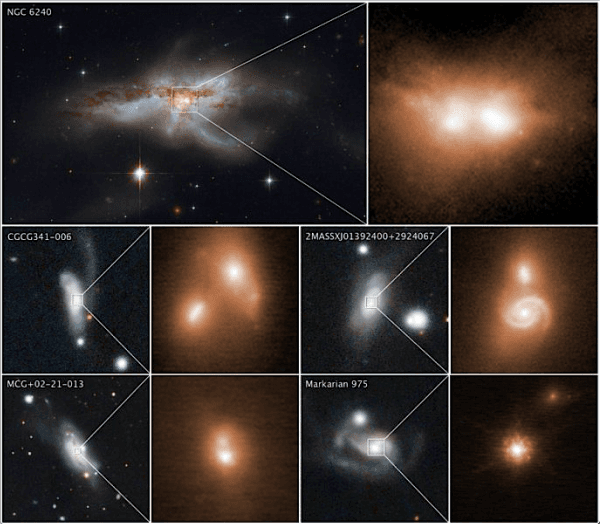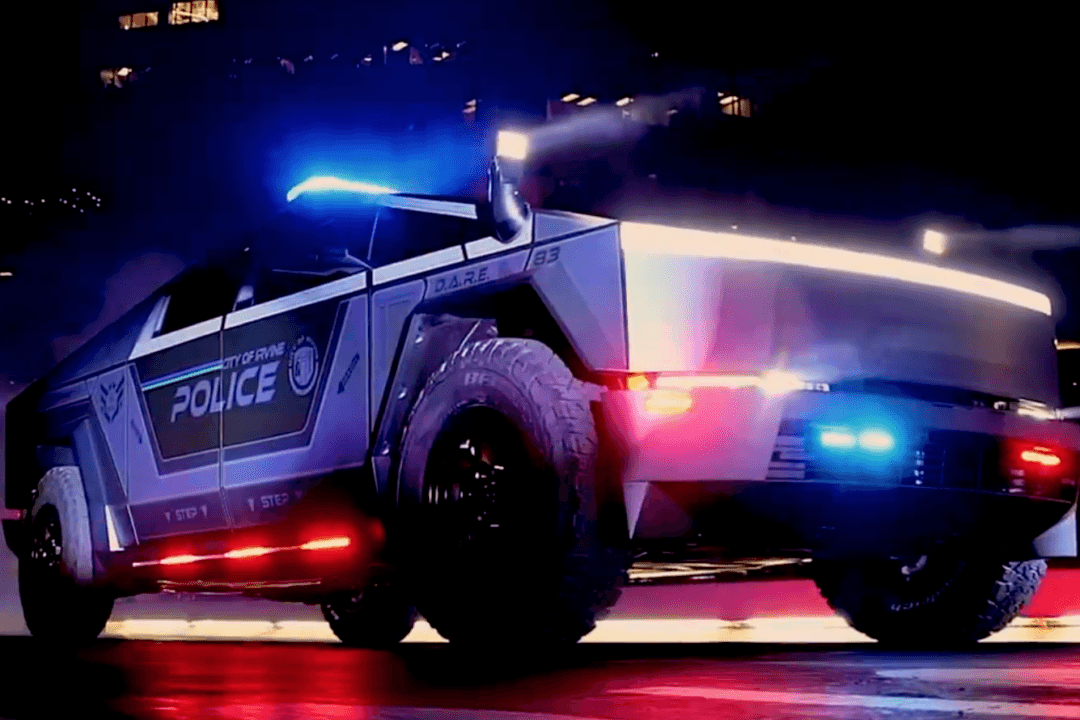A team of researchers has for the first time captured what it looks like when two galaxies are in the final stages of merging together, with the powerful collision of their two supermassive black holes causing ripples in the very fabric of space-time.
This kind of collision is expected to happen to our own Milky Way galaxy and the nearby Andromeda galaxy in a few billion years, as shown in the video above, which was released by NASA in May.
“Seeing the pairs of merging galaxy nuclei associated with these huge black holes so close together was pretty amazing,” Koss said in a statement.
These black holes grow very quickly during the last 10 to 20 million years before the collision, “as they feast on gas kicked up by the galaxy merger,” according to the release.

A Difficult Search
The research team was first inspired by an image from the Hubble telescope that showed two galaxies nearly combined into one, and it was used as the model for the study. Such imagery is difficult to find.Most other images of merging galaxies have been captured at earlier stages, with their black holes relatively far away from each other. This is because when the merger of a pair of galaxies is nearly complete, they are surrounded by thick clouds of dust and gas, and only very high-resolution imagery can isolate the two galaxies’ colliding nuclei.
To find other good examples, the team searched for active black holes through 10 years of NASA X-ray data from the Burst Alert Telescope (BAT) at the Neil Gehrels Swift Observatory.
“The advantage to using Swift’s BAT is that it observes high-energy, ‘hard’ X-rays,” said study co-author Richard Mushotzky, a professor of astronomy at UMD and a fellow of the Joint Space-Science Institute (JSI). “These X-rays penetrate through the thick clouds of dust and gas that surround active galaxies, allowing the BAT to see things that are literally invisible in other wavelengths.”
The team then looked through the Hubble archive for images of those same merging galaxies from the X-ray data, followed by the use of the Keck telescope to find galaxies that weren’t in the Hubble imagery.
The resulting pictures were “part of the largest-ever survey of the cores of nearby galaxies using high-resolution images in near-infrared light taken by the Hubble and Keck observatories,” according to the news release.
The Final Stages of Galaxy Collisions
The scientists were able to find a number of pairs of galaxies with their black holes only about 3,000 light-years apart, which is very close when discussing cosmic measurements. These supermassive black holes shown in the images above will likely combine to form even more massive black holes within the next 10 million years.The research team looked for galaxies had active, luminous black holes obscured by large amounts of dust and gas. They studied a total of 96 galaxies with the Keck telescope and 385 from the Hubble, all around 330 million light-years from Earth.
More than 17 percent of these galaxies included a pair of black holes at the center, which was a surprisingly large percentage, “because most simulations suggest that black hole pairs spend very little time in this phase,” according to the press release.
They then compared those galaxies with a control group of 176 from the Hubble images, which only had one percent that included pairs of black holes in the last stages of merging together. These direct observations had not been made before.
“Computer simulations of galaxy smashups show us that black holes grow fastest during the final stages of mergers, near the time when the black holes interact, and that’s what we have found in our survey,” said Laura Blecha, assistant professor of physics at the University of Florida and a co-author of the study.
“The fact that black holes grow faster and faster as mergers progress tells us galaxy encounters are really important for our understanding of how these objects got to be so monstrously big.”
These merging galaxies and supermassive black holes are believed to have been even more common in the early universe than now. Scientists hope to gain a better view of these collisions with the launch of NASA’s highly sensitive James Webb Space Telescope in 2021.




